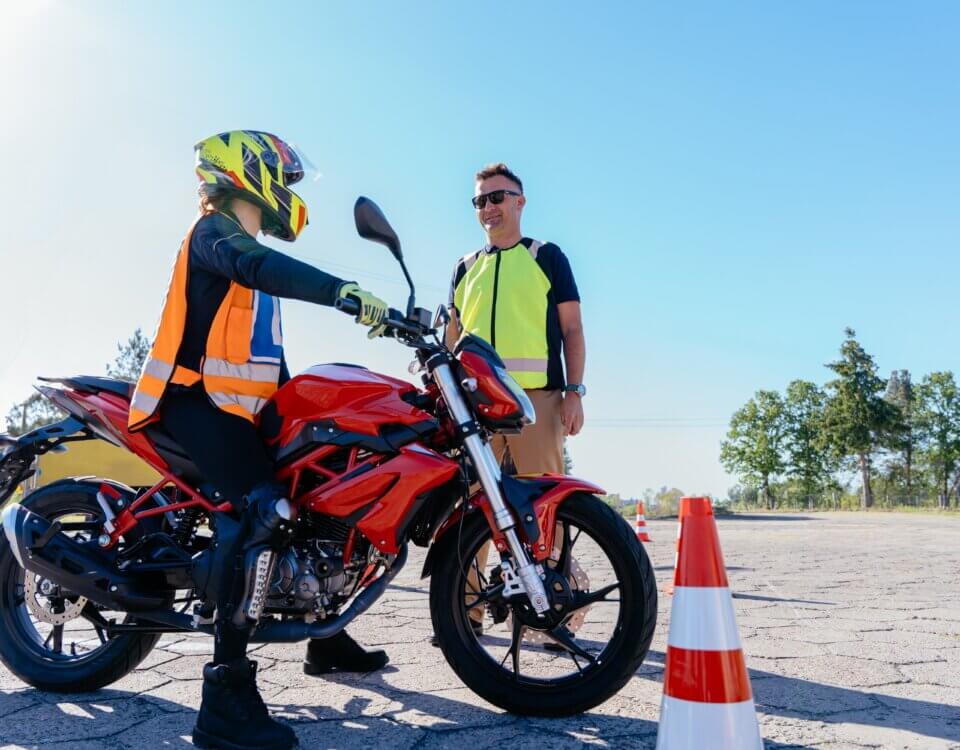Scooters and mopeds often seem similar, but under California law they are treated differently in important ways. Knowing which category a vehicle falls into can affect licensing, insurance, helmets, liability, and your rights if you are injured. Hillstone Law is here to help you understand the distinctions so you can protect your legal interests.
How California Defines Mopeds and Scooters
California’s Vehicle Code defines a moped as a two or three wheeled device that may include pedals for human propulsion or be powered by a motor. The motor must produce less than four gross horsepower and the vehicle cannot travel over 30 mph on level ground to qualify as a moped.
A scooter is defined as a two wheeled device with handlebars powered by an electric motor or a small gas motor. It may or may not have a seat. If a device qualifies as a motorcycle, motorized cycle, or moped under other definitions, it no longer qualifies as a scooter under the law.
Licensing, Registration, and Other Legal Requirements
For mopeds California requires that riders be at least 16 years old and hold an M1 or M2 motorcycle license. Mopeds must also be registered, carry special license plates, and have liability insurance like motorcycles. Helmet use is mandatory for riders and passengers.
For scooters the requirements are different. A regular driver’s license is usually sufficient unless the motor exceeds 50cc, in which case a motorcycle license may be needed. Scooters generally do not need registration, license plates, or insurance though insurance is strongly recommended. Helmet laws for scooters depend on age: minors must wear helmets, and adults may have different requirements. Rules also limit where scooters can be ridden and local jurisdictions may impose additional regulations.
Common Risks for Riders
Riding a scooter or moped comes with significant risks because these vehicles do not offer much physical protection. In accidents riders may suffer broken bones, internal injuries, traumatic brain injuries, disfigurement, spinal injuries, permanent impairment, as well as emotional and psychological trauma.
If another person’s negligence causes the accident you may be able to recover both economic damages like medical bills, lost income, and rehabilitation and non economic damages such as pain and suffering, loss of enjoyment of life, emotional distress, and disfigurement.
California law also allows for comparative fault. If a rider is found partially responsible for the accident, their compensation may be reduced by the percentage of fault assigned.
How a Lawyer Can Help After a Scooter or Moped Accident
After an accident involving a scooter or moped the steps a lawyer can take include:
Collecting evidence such as police reports, medical records, photos, and witness statements to establish fault
Documenting all your injuries and losses including medical expenses, lost wages, rehabilitation, and non economic impacts
Protecting your rights when dealing with insurance companies, especially if they try to undervalue or deny your claim
Ensuring all legal requirements and deadlines are met for filing a claim or lawsuit
What You Should Do If You Are Injured
Seek medical attention immediately and keep detailed records of all treatments and diagnoses
Take photos of the accident scene, your injuries, damage to vehicle or equipment, and environmental conditions such as road or lighting
Collect names and contact information of witnesses, other involved parties, and any oversight entity if applicable
Avoid admitting fault or making statements to insurers or other parties without legal advice
Reach out to an experienced personal injury attorney who knows scooter and moped law so claim timelines and rights are protected
Why Choose Hillstone Law
Hillstone Law has experience helping riders injured in scooter and moped accidents. We understand how the differences in law, licensing, registration, and insurance affect compensation. We work on a contingency basis so you pay nothing unless we win. We handle your case with care, gathering evidence, coordinating with experts, and fighting to achieve full compensation for your economic and non economic losses. Contact Hillstone Law for a free consultation so you can understand where you stand and what your best course of action is.
Note: These blog posts are created solely for the use of Hillstone Law. The information is gathered from internet research, publicly available sources, and artificial intelligence (AI) tools such as ChatGPT. While we aim to share helpful and educational content, Hillstone Law does not independently verify every detail. Some information may be incomplete, outdated, or subject to change without notice. If you believe any part of a post is inaccurate, misleading, or infringes upon copyright, please contact Hillstone Law immediately so we can review it and take appropriate action, including correction or removal.
Disclaimer: The material provided in these blogs is for general informational purposes only and should not be considered legal advice. Reading these posts does not create, and is not intended to create, an attorney-client relationship with Hillstone Law. Our intent is to share knowledge, raise awareness, and provide helpful resources to the public; however, Hillstone Law makes no warranties or guarantees about the accuracy, completeness, or reliability of the information provided, and expressly disclaims liability for any actions taken in reliance on it. The photos used in these posts are for illustrative purposes only and do not depict actual clients, individuals, or incidents unless expressly stated. If you or a loved one has been injured in an accident, please contact Hillstone Law at (855) 691-1691. Our attorneys are available to answer your legal questions and help you understand your rights.







